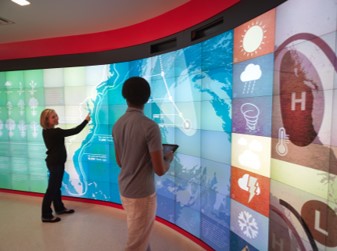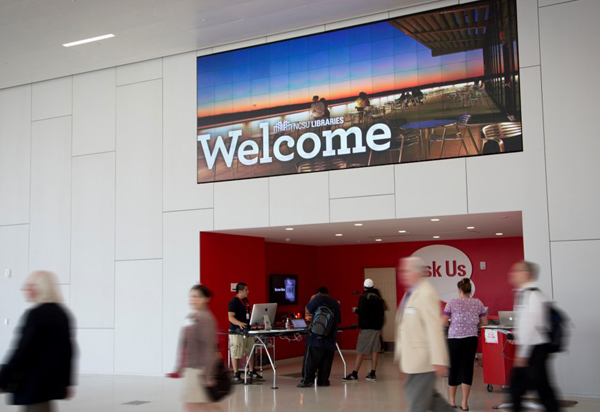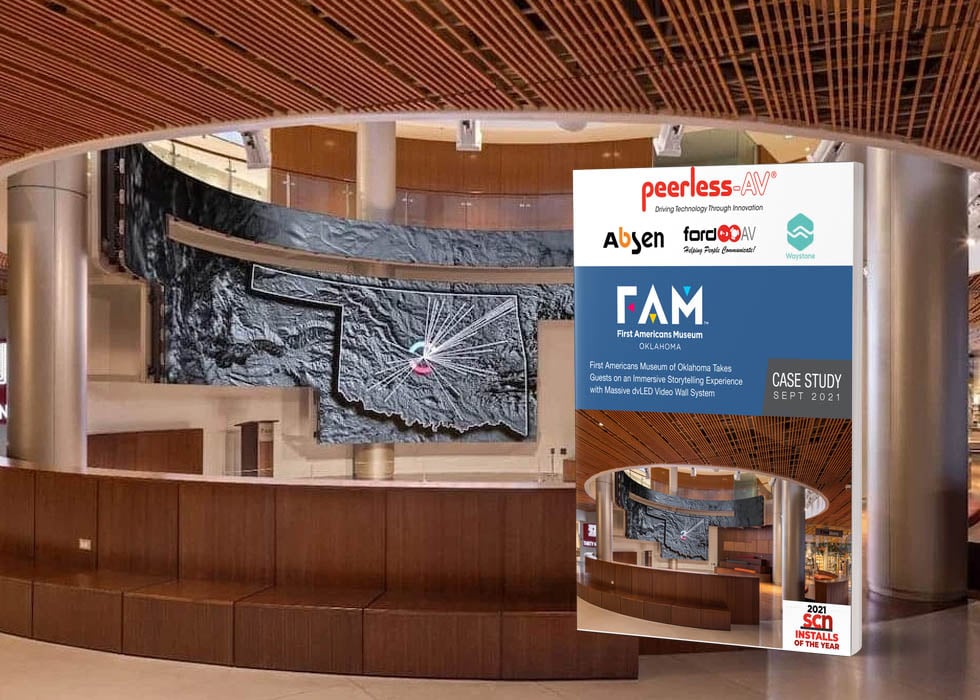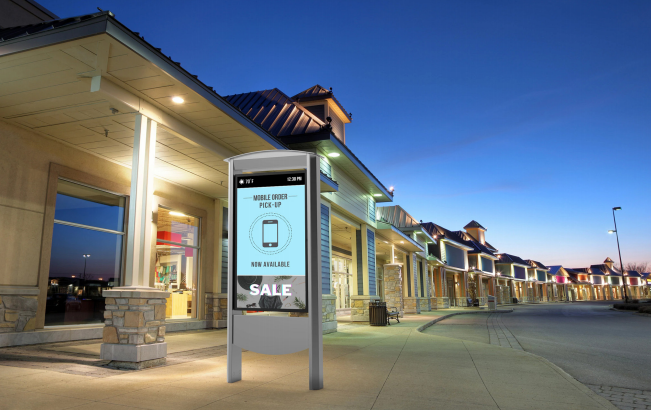How Digital Signage Can Benefit Higher Education
By Tim Kridel, Special to AVIXA
 AV technology can deliver powerful outcomes for colleges and universities. Institutions of higher education are using digital signage to enable self-service in libraries and other buildings, to raise awareness of programs and services, and to keep students and visitors safe on campus.
AV technology can deliver powerful outcomes for colleges and universities. Institutions of higher education are using digital signage to enable self-service in libraries and other buildings, to raise awareness of programs and services, and to keep students and visitors safe on campus.
Here are a few ways higher education institutions can use digital signage to generate positive outcomes:
To Enable Self-Service
Retailers and quick-service restaurants aren’t the only businesses using touchscreen digital signage to provide self-service options.
In early 2017, North Carolina State University’s James B. Hunt, Jr., and D.H. Hill libraries added digital signage to help patrons find their way around the sprawling facilities, as well as check the availability of study rooms. Although the network is still relatively new, it’s already freeing staff at the “Ask Us” information desks and elsewhere to focus on other tasks, such as handling questions too specific for even interactive signage to answer.
“They’re constantly getting questions about where an event is happening and about rooms,” Josh Boyer, head of the user experience department at NCSU Libraries, told InAVate magazine. “The screens are there to answer questions we’re already getting. It’s part of trying to do self-service.”
When deciding where to put signage, start with the places where most people likely will be or go when they have questions. For example, some of the NCSU signage is by the “Ask Us” desks, because that’s where patrons gravitate when they have questions.
To Build Awareness of Services

Digital signage can be a highly effective way to build awareness of services that people otherwise overlook. For example, NCSU uses its signage to show patrons that books aren’t the only things they can borrow.
“A common conversation with a junior or a senior is, ‘I had no idea that you loaned DSLR cameras or Raspberry Pis or VR headsets,’” Boyer told InAVate.
Putting some of the digital signage by the “Ask Us” desks helps achieve this goal, because many patrons will be standing in line there. Queues create captive audiences, making them ideal locations for digital signage — a tip that applies to every vertical.
To Disseminate Safety Information
Digital signage is a proven way to broadcast emergency messages and other important information around campus. Despite advances in other technology platforms, like smartphones, digital signage is among the most effective means of mass notification.
Historically many digital signage networks were deployed primarily to provide information before and during emergencies, such as warning people that a tornado was approaching. Once mobile phones became ubiquitous, some organizations questioned the business case for extensive signage networks: Why not just leverage the displays people already carry with them at all times?
 This logic has a couple of drawbacks. First, as many colleges quickly found, just because staff, faculty and students are asked or required to provide their mobile number for emergency text messages doesn’t mean they will. Non-compliance significantly undermines the notification system’s reach and effectiveness. It’s reduced even further when people do provide their mobile number but then don’t update their profile when they get a new one. And then there are the people who aren’t registered simply because they’re visitors, such as prospective students and their parents, and people attending campus events such as games.
This logic has a couple of drawbacks. First, as many colleges quickly found, just because staff, faculty and students are asked or required to provide their mobile number for emergency text messages doesn’t mean they will. Non-compliance significantly undermines the notification system’s reach and effectiveness. It’s reduced even further when people do provide their mobile number but then don’t update their profile when they get a new one. And then there are the people who aren’t registered simply because they’re visitors, such as prospective students and their parents, and people attending campus events such as games.
Second, mobile networks quickly become overloaded during major emergencies as people attempt to reach friends and family, post and check status updates on social media, and view news sites. Although mobile networks in some countries, such as the United States, are able to prioritize alerts from government agencies ahead of all other traffic, they still can be delayed by minutes or more. And when the emergency is a natural disaster such as a hurricane or flood, mobile networks in that area often are knocked out of commission.
These two drawbacks highlight why digital signage remains a key component in emergency-notification systems. Digital signage complements the mobile channel by providing a way to reach people who haven’t signed up for notifications, including visitors, as well as those who have but can’t be reached because mobile networks are damaged or overloaded.
This also is an example of why it’s critical that the digital signage facilities have compelling, regularly updated content: If it’s boring, stale or both, people will start ignoring it, which means they’re far less likely to be paying attention to it when an emergency alert appears.
Finally, digital signage often is a way to comply with safety laws. For example, the Americans with Disabilities Act requires some facilities to have technology that can provide hearing-impaired patrons with emergency alerts and other information. Digital signage is one of those technologies.
Digital signage is a broad, deep category of technologies and applications that go by many names, including “digital out-of-home,” “place-based media,” “narrowcasting” and “captive audience networks.” The common denominator is that they’re all designed to provide people with information that they can act on, typically at that moment in that place.





.jpg?sfvrsn=81e7976_1)